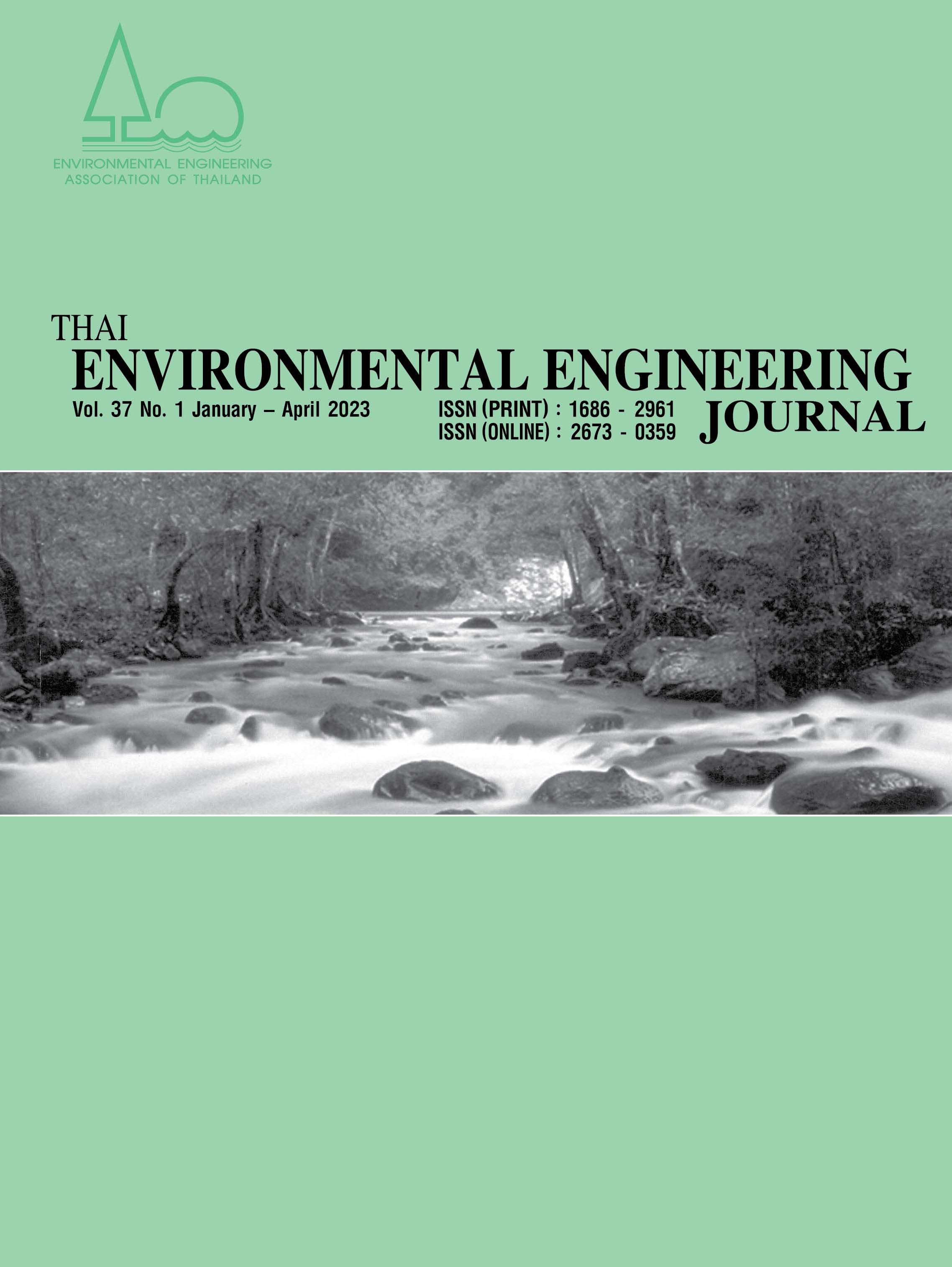Important Factors Analysis Toward Land Use Development Surrounding the Public Sky Train Station: A case study of the Dark Green Line, Bangkok Metropolitan Administration (BMA)
Main Article Content
Abstract
The area surrounding the public sky train station, in Bangkok is highly dynamic, has many complicated and important factors to response land development according to the sky train lines of urban development, so the study objectives are 1) to study the important factors toward land use development surrounding the public sky train stations in urban and suburb areas, and 2) to study the trend of land use change surrounding the public sky train stations in urban and suburb areas. Asoke and Udomsuk stations represented the urban and suburban areas, respectively. The researchers collected data by field study to survey the physical characteristics of the area around both train stations, following the concept of Transit-Oriented Development (TOD) and using the Multiple Criteria Analysis (MCA) for interviewing 12 experts to assess
10 important factors toward the development of land use around the Dark Green Line stations (BTS). The study results indicated that there were 2 groups of important factors toward land use development around Asoke Station (urban area) and Udomsuk Station (suburb area). For Asoke Station; The main factors were: Factor 9: Criteria announced in the Town Planning Law, Factor 2: Connectivity to housing, workplaces, and other mass transits; Factor 10: The importance of business and trade in the area, and Factor 7: Land and housing prices surrounding the train stations, respectively. Likewise, for Udomsuk Station; The main factors included Factor 9: Criteria according to the Town Planning Law, Factor 10: The importance of business and trade in the area, Factor 2: Connection with housing and workplaces and other mass transits, and Factor 4: The distance to the train station, respectively. The important factor has to be in conformance with town planning clarification. The area surrounding the Asoke station could be a big business development because it is an urban area with high land and house prices and it is the economic center of Bangkok. For the area around Udomsuk station, it could be a small business development as it is a suburban area focused on living and convenience /safety distance travel to the station.
Article Details
References
Office of Registration Administration Department of Provincial Administration. 2020. Population. Available from: https://stat.bora.dopa.go.th/stat/ [Accessed 2021 August 22].
National Statistical Office. 2019. Population by province. Bangkok.
ITDP. 2019. What is TOD?. Institute for Transportation & Development Policy. New York.
Punyanok, W. 2016. Transit-Oriented Development. Bangkok.
Srirattanachot, T. 2014. Design guidelines of multimodal station and transit-oriented development: Case study Morchit BTS station. Bangkok: Master Degree of Architecture, Thammasat University.
Jingjit, S. 2015. An application of transit-oriented development (TOD) forward to develop capability analysis of area improvement of rapid transit station. Bangkok: Master degree of Architecture Program. Thammasat University.
Duangtima, W. and Phetchanon, C. 2017. Public Space Planning Development Guidelines for Transit Oriented Development (TOD). The 8th Built Environment Research Associates Conference 2017 (BERAC 8). 584-591.
Sukkerdpol, K. 2018. A Study of Changing Land Use Around the Mass Transit Blue Line in Bangkok. Bangkok: Master of Arts Business Economics. Thammasat University.
Asayut, K. 2020. The Development of the commercial Area Surrounding the MRT Station and the Marketing Communication that Affect the Decision Making Process for Metropolitan Rapid Transit Chalong Ratchadham Line (MRT Purple Line Tao Poon to Khlong Bang Phai Station). Bangkok : Master of Business Administration Program. Silpakorn University.
Terakul, J. 2022. Transit-Oriented Development of Bangkok Transit System Skytrain and the Impacts on Land Values : The Case Study of Bearing Station. Chiang Mai : Master of Economics in Applied Economics. Maejo University.
Limmonthon, A. 2021. Direction of Mass Transit System Development in Regional Cities and Transit Oriented Development Guideline. Journal of Transportation and Logistics. 13(1): 9-39.
Sukornan, C. and Priewavanit, C. 2022. The impact of public transport development. The Third National Conference on Public Affairs Management. 182-190.
Yusok, S. and Konisranukul, W. 2015. A Study of Land Use Change around On-Nut BTS Station within the Concepts of Transit-Oriented Development. Journal of Social Science Srinakharinwirot University. 18, 66-82.
Mackett, R.L. and Edwards, M. 1998. The impact of new urban public transport systems: Will the expectations be met. Transportation Research Part A Policy and Practice. 34(2): 231-245.
Wichiannoi, N. 2014. Urban planning and land use in Thailand. Department of Public Works and Layout City. 27-28.
Bubeliny, O. and Kubina, M. 2021. Impact of the concept Smart City on public transport. Transportation Research Procedia. 55: 1361-1367.
Bangkok Mass Transit System Public Company Limited. 2021. Parking. Avilable from: https://www.bts.co.th/
parking/parking-page.html [Accessed 2021 August 19].
Sukamon, S. 2020. Insights into the Asoke area, HUB of BANGKOK, eat, live, travel, work, all in one place. Avilable from: https://www.prop2morrow.com/2020/12/21/asoke-walden-sukhumvit-23/[Accessed 2021 August 22].
Salakkham, K. 2011. Qualitative housing choices factor in suitability analysis for housing areas nera stations on the green line Bangkok transit system (BTS). Bangkok: Master degree of Architecture. Silpakorn University.
Belzer, D. and Poticha, S. 2009. Understanding transit-oriented development: Lessons learned 1999-2009. New York: Boston College's Institute.
Tiyawongsuwan, S. 2017. Criticizing Transit Oriented Development Patterns between Original Concept and Khon Kaen Comprehensive Plan Act. Journal of Creative Environment Faculty of Architecture Khon Kaen University. 16(1): 109-125.
Wannapha, C. 2016. Changes of urban areas along the Bangkok metropolitan rapid transit green line corridor from Asoke station to Bearing station. Bangkok: Silpakorn University.


